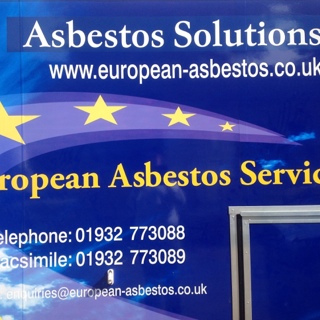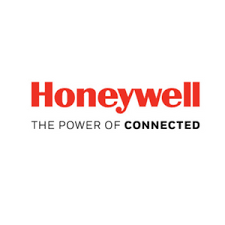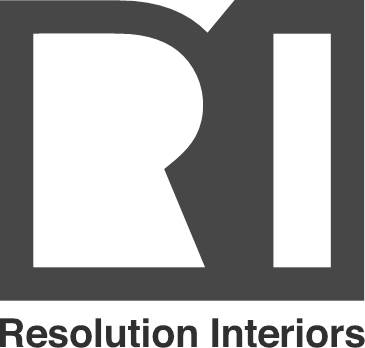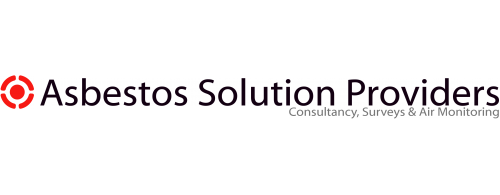Information
-
DOCUMENT NUMBER
-
SITE PHOTOGRAPH
-
PROJECT NUMBER
-
SITE ADDRESS
-
DESCRIPTION OF NON-LICENSED WORK
-
AUDIT DATE
-
AUDITOR
-
SUPERVISOR
-
OPERATIVES
1 ADMIN
-
1.1 EAS Health and Safety Policy is on site?
-
1.2 Asbestos License is on site?
-
1.3 Waste carriers license is on site?
-
1.4 Insurance Cert is on site?
-
1.5 EAS Environmental Policy is on site?
-
1.6 All personnel Certs (medical, face fits, training and mask Certs) are on site?
-
1.7 Current certificates are on site for all plant?
2 PLANNING/SET UP
-
2.1 Has this project been notified to HSE if necessary (NNLW) with evidence in the iFile?
-
2.2 Is the Method Statement on site?
-
2.3a Is the MS specific to this site, accurate and adequate to describe works?
-
2.3b Does generic MS cover this project thoroughly, and are all associated risks assessed sufficiently?
-
2.4 Does the Risk Assessment cover all risks and are specified Control Measures all appropriate?
-
2.5 Is the type of RPE & other PPE identified on the RAMS appropriate to the works?
-
2.6 Work at height has been sufficiently planned?
-
2.7 Has any necessary isolation been sufficiently planned, and arranged?
-
2.8 Is a DCU specified or necessary for this project?
-
Is the DCU on site, setup and operational?
-
Is the DCU as close to the works as possible?
-
Are all DCU internal surfaces clean and in good condition?
-
Does DCU have EAS ID number?
-
Does DCU have correct vehicle registration plate?
-
Is DCU level (support legs down) and secure (clamped and locked)?
-
DCU has warm running water?
-
Are all DCU doors fully self closing?
-
Does the DCU contain sufficient supplies (Tyveks, towels, shower gel, nail brush etc.)?
-
Are DCU fixtures and signage as per guidance (seats, hooks, rails etc.)?
-
Are DCU filters clean, and are spares available?
-
Has sufficient decontamination equipment been set up (buckets, sponges, waste bag etc)?
-
2.9 Is an enclosure necessary on this site? This will be a 2 stage airlock and NPU for major artex works.
-
Is the enclosure constructed well, and completely as per MS/EAS procedures?
-
Is the enclosure adequately signed?
-
Does vision panels or CCTV provide adequate view of work areas?
-
Are the airlocks constructed as per MS, with adequately weighted flaps?
-
2.10 Is a NPU necessary for this project?
-
Is NPU externally clean?
-
Has it been placed for optimum position and effectivness?
-
Is it correctly attached to the enclosure or if inside is sheeted out properly?
-
Is the gauge working and readable?
-
Is the gauge reading ok (<12o'clock in the green)?
-
Is the sticker on the unit legible and does it match cert on iFile?
-
2.11 Has welfare been sufficiently planned?
-
2.12 For works within an enclosure is there an idealised or specific drawing?
3 SITE OPERATION
-
3.1 Vehicle is externally clean and considerately parked?
-
3.2 The internal areas of the van are clean and tidy - particularly around waste box)?
-
3.3 A first aid kit is available on site, and fire extinguisher and air horn as necessary?
-
3.4 All operatives are clean shaven?
-
3.5 RPE is either in use, or clean and boxed?
-
3.6 All RPE necessary for the current task is in use and been worn correctly?
-
3.6a Is all relevant PPE available and being worn correctly?
-
3.7 There are sufficient H-Vacs on site?
-
3.8 H-Vacs are bagged or boxed (yellow boxes are on site) if outside the enclosure?
-
3.9 All other necessary plant is on site and in good condition?
-
3.10 Asbestos Area is well controlled with fencing, barriers or tape as appropriate?
-
3.10a Does the set up match the specific supplied drawing or has the Supervisor used best practice placement where generic drawings exist?
-
3.10b Respirator Zone is marked on the enclosure or flapped door?
-
3.11 All equipment is stored tidily, and good housekeeping is evident on site?
-
3.12 Work at height - access equipment is appropriate and correctly constructed
-
3.13 Have any planned isolations been done, and do the operatives have proof of this?
-
3.14 ACMs are being sufficiently wetted?
-
3.15 ACMs are being wrapped if too large for the bags (i.e. not being broken)?
-
3.16 All waste is double bagged/wrapped?
-
3.17 Waste bins are sufficient and secure?
-
3.18 Skip is in good condition, locked and signed?
4 INDIVIDUAL COMPETENCE REVIEW
-
Tick to undertake individual competency assessment:
-
Repeat for each individual assessed:
New Assessment
-
Name of person completing this assessment:
-
Assessment Catagory:
- RPE
- Decontamination
- H-Vac
- Negative Pressure
- Van
- Removal/wetting techniques
- Area control
- General H&S
-
RPE
-
1 Describe common faults you may be looking out for during RPE pre-use checks:
-
2 Explain the importance of RPE cleanliness:
-
3 Why should RPE always be kept boxed when not in use?
-
4 Give examples of non-licensable projects where it would usually be best practice to wear full-face RPE:
-
5 For what reasons would an operative need to rearrange a face fit test even when it is still in date?
-
6 What other factors may effect a suitable face fit?
-
DECONTAMINATION:
-
1 Failure to decontaminate properly could lead to what?
-
2 There are three stages of decontamination, the third of which is in the DCU, explain the first and second stage:
-
3 In a direct connection, explain the importance of, and the features of the intervening tunnel between airlock and DCU:
-
4 Specify the equipment needed for each of the three airlock stages:
-
5 Explain under what rare circumstances the full-face RPE wouldn't be used during transiting, and explain the alternative arrangements that should be used:
-
6 Describe the decontamination equipment that should be set up on non-licensed projects where no DCU is required:
-
7 Specify what needs to be done inside a DCU before leaving site each day:
-
H-VAC:
-
1 Explain why brushes or brooms should never be used for cleaning:
-
2 explain suitable transportation of the H-Vac (ALG 01/09 p20):
-
3 Why would the analyst need the H-Vac to be left in place for the 4-stage clearance?
-
4 Why should overly wet materials never be cleaned with the H-Vac?
-
5 What pre/post use checks do you perform on your H-vacs?
-
NEGATIVE PRESSURE:
-
1 Describe the importance of negative pressure:
-
2 What factors could affect the uniformity of negative pressure within the enclosure?
-
3 Describe when additional air inlets should have been planned, and describe precautions you need to take when they are used:
-
4 Why should stripping operations stop during a pre-filter change?
-
5 How does smoke testing aid you in determining the sufficiency of planned airflow?
-
6 Describe how the NPU nanometer (gauge) can help you manage adequate negative pressure?
-
VAN:
-
1 Why should all areas of the van (cab, storage, waste) be as clean as reasonable practicable?
-
2 Explain the importance of stowing all equipment safely and tidily:
-
3 Under what circumstances is it permissible to carry waste in the storage section of the van?
-
REMOVAL/WETTING TECHNIQUES:
-
1 What factors on site would cause you to question (contact the CM) regarding the suitability of planned stripping techniques?
-
2 What are some potential problems with wetting techniques?
-
3 How can the Supervisor ensure operatives are pre-wetting ACMs adequately?
-
4 Describe the adequate use of wetting agents (Astrip):
-
5 What factors can lead to poor (under or over) wetting?
-
6 What problems can be caused by poor (under or over) wetting ACMs?
-
7 Describe correct placing of needles for injection wetting:
-
8 What is the aim of effective spraying?
-
AREA CONTROL:
-
1 At what point does signage need to be placed to warn 3rd parties that work is in progress?
-
2 Explain the difference between an 'Asbestos Work Area' and a 'Respirator Zone':
-
3 Regarding welfare, what activities should never take place within an asbestos work area?
-
GENERAL HEALTH & SAFETY:
-
1 Describe potential risks (other than asbestos) that you need to manage on site?
-
2 When is work 'at height'?
-
3 What is a confined space?
-
4 Why can electricity be a particular hazard on site?
-
5 What pre-use equipment checks do you employ to eliminate or reduce electrical risks?
-
6 What practices/ equipment can be used to reduce risks of slips/trips?
-
7 How could the work of other (non-EAS) contractors impact on the management of your site?
-
8 What H&S considerations apply to driving?
-
9 Apart from EAS operatives, who else do we need to consider when managing site risks?
-
10 Apart from RPE, overalls and STC boots, what other PPE may be necessary on some sites?
-
Competency assessment completed by:
-
6 ANONYMOUS OPERATIVE SAFETY FEEDBACK
-
Tick to fill in Anonymous Safety Feedback
-
If you have any safety concerns on site, how could that be effectively communicated to Management (are current methods - like the suggestion form - sufficient or do you have better suggestions)?
-
Do you feel that your concerns are always taken seriously?
-
How approachable do you find EAS Contract Managers, Directors or the H&S team?
-
Do you know of any equipment or methods that could make our work easier?
7 SUMMARY
-
Tick if there are any non-conformances above:
-
Non-Conformance Summary
Non-Conformance
-
Non-conformance details:
-
Describe the action taken to complete non-conformance:
-
Person/People responsible for non-conformance completion:
-
Date of non-conformance completion:
-
Non-conformance completed by?
-
FURTHER DETAILS:
-
Auditor:











